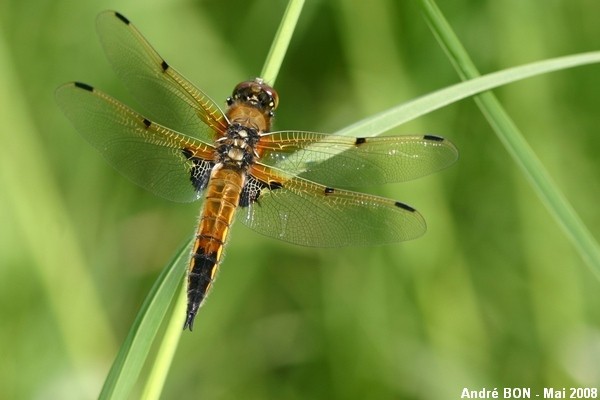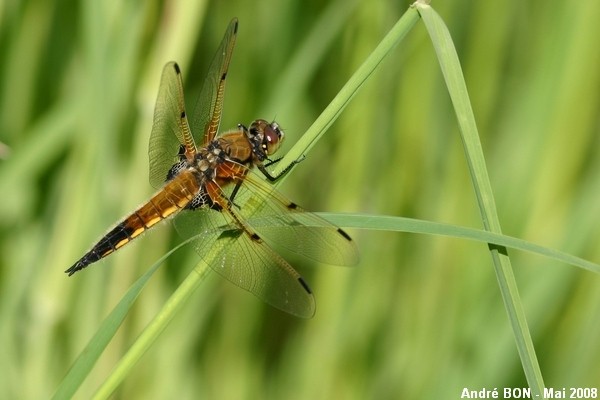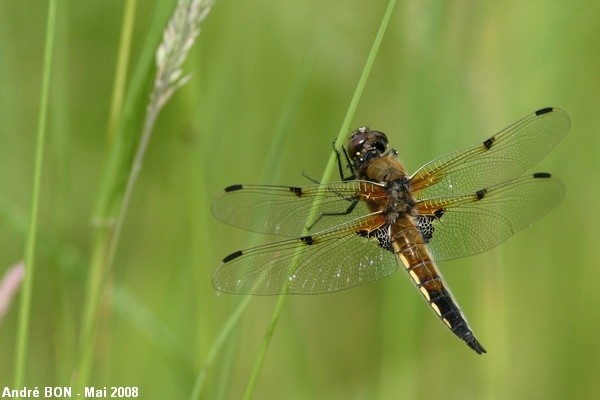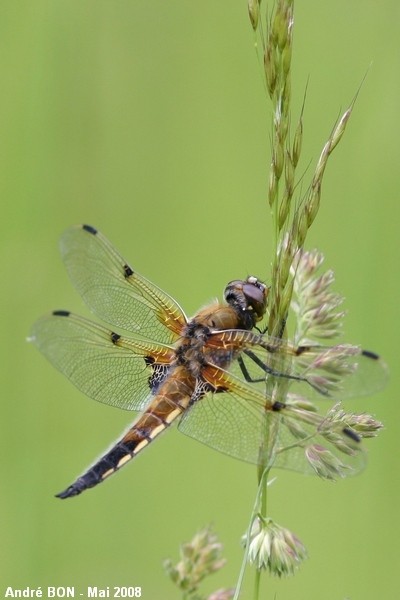



| Four-spotted Chaser (Libellula quadrimaculata (Linnaeus, 1758)) |




|
|
Scientific name: Libellula quadrimaculata (Linnaeus, 1758) Common name: Four-spotted Chaser French name: Libellule à quatre taches Order: Odonata Suborder: Anisoptera Family: Libellulidae Wingspan: Body size : 39 to 47 mm; Wingspan : 75 mm. Biotope: Banks of still water areas, lakes, ponds. Peat bogs and coastal areas. Geographic area: Europe, Asia, North America. Flight time: Late April to mid-September, with a peak in early summer. |
The Four-spotted Chaser has four marks on the wings, the two pterostigmas and two marks on the nodus. The hind wings show a large brown mark near the base. The thorax is a uniform brown colour with yellow markings on the sides. Males and females a very similar. Males are generally darker and thinner. Their anal appendages tend to curve outwards. The female's anal appendages are straight. Females lay the eggs on floating plants between April and August. The larvae developmental cycle lasts two years. There is a specific form, praenibula, which shows much larger marks on nodus and near pterostigmas. |
| [To know more about the Four-spotted Chaser] [Next picture] [Top] |

|
I have mainly observed Four-spotted Chaser among high grasses. They were rather often landing and have not been very shy. I have just been annoyed by the wind to take pictures. I think that this one is a male as the anal appendages are curved outwards. |
| [To know more about the Four-spotted Chaser] [Next picture] [Previous picture] [Top] |

|
A side view to change from above. |
| [To know more about the Four-spotted Chaser] [Next picture] [Previous picture] [Top] |

|
EF 300mm IS USM lenses are really well suited for dragonfly pictures. You can stand at a reaonable distance, then avoiding the dragonfly to fly away. |
| [To know more about the Four-spotted Chaser] [Previous picture] [Top] |

|
A basic rule for wildlife photography, especially among high grasses, is to lean down so that you are at the same height as the eyes of the subject. |